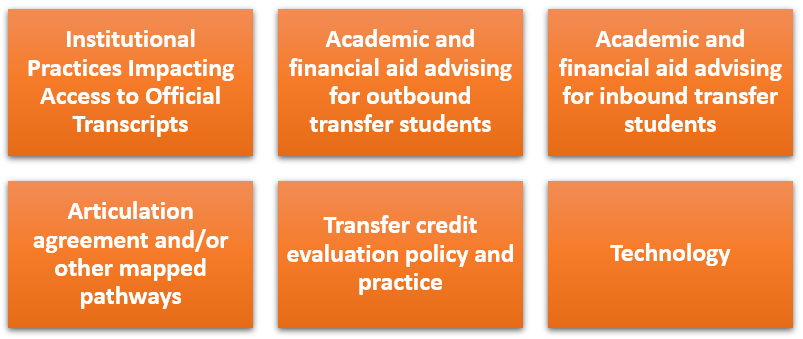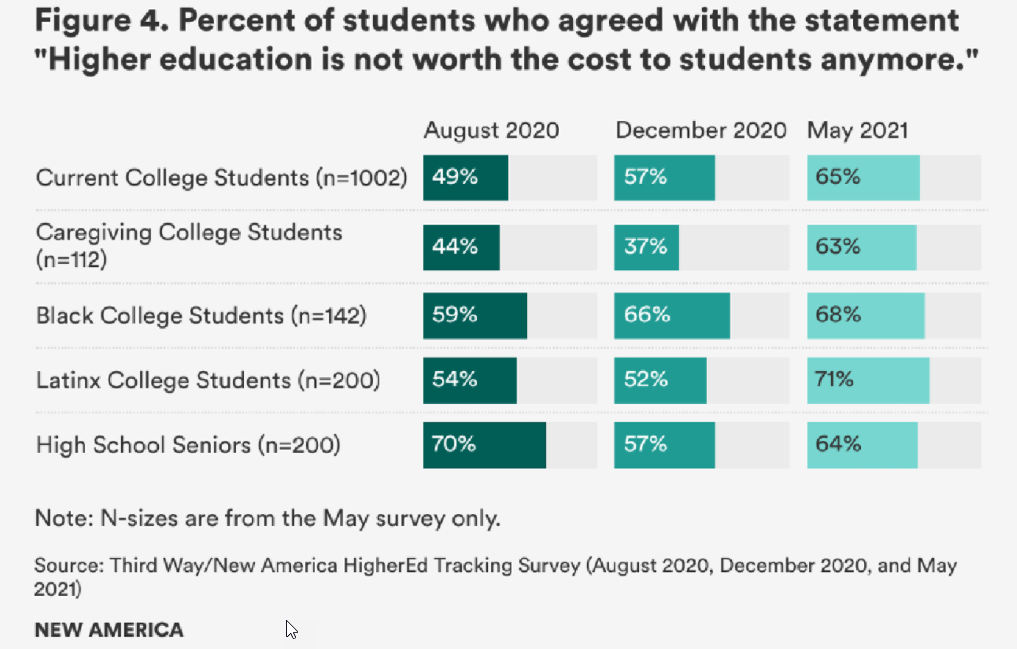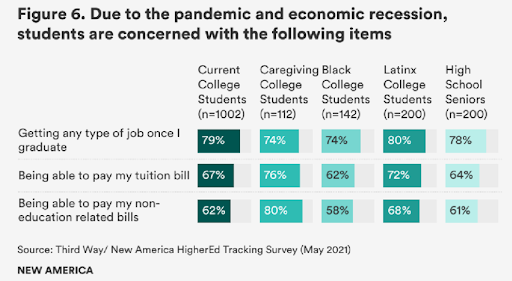We had our AACRAO Transfer Practice Summit on July 8 and 9 with more than 400 registrants. Participants shared many examples of best practice, established a sense of community, and highlighted a common goal to serve transfer students well. Common themes included the need for good communication with incoming transfer students, the need for data to measure efforts to support transfer students, and the use of technology, among others. One of the speakers, Carolyn Gentle-Genitty, Ph.D., Assistant Vice President for University Academic Policy and Director, University
Transfer Office at Indiana University, shared what she developed as an annual checklist for transfer practice and policy. I thought I would share it with you, with Dr. Gentle-Genitty’s permission, because the 10 transfer nodes address many of the topics and best practices shared at the conference. I hope it will serve as a conversation starter at your institution around the topic of service to transfer students.
Annual Transfer Nodes Checklist[1]
With a goal focused on automation, articulation, and advising, below are 10 best practices for transfer success for institutional assessment.
- Adheres to and tracks AACRAO’s 12 Transfer Bill of Rights?
- Tracks transfer student experiences? (e.g. burdens, successes, progress)
- Collects transfer data in separate dashboard and uses it to monitor student academic trends (e.g. time-to-degree, completion, retention, apply>admit>enroll yields, bursar holds, undistributed credits, discipline, swirling, academic supports,
etc.)
- Makes publicly available articulation agreements, degree maps, and credit not accepted
- Provides a transfer-friendly website? (e.g. ease in use, transparent policies, accessible curricula)
- Offers automated responses, evaluations, and uploads for prospective transfer students. System should be linked to internal rules and systems equivalencies for accuracy.
- Identifies a transfer liaison per unit? (e.g. Increase speed in credit evaluation; rule creation)
- Makes training on institutional | external policies/guidance available to all staff and faculty
- Provides portal for students to log appeals and know expected response time
- Has medium to communicate and respond to changes and trends in transfer regularly
AACRAO will continue its re-envisioning transfer initiative with additional events,
forums, research, and recommendations over the next several months. This rollout will include AACRAO’s recognition of excellence in supporting transfer student success with institutional badging. AACRAO is developing a website highlighting the
details and we are seeking feedback on the concepts shared at the summit. The proposal includes evaluating institutional practice and policy in the following six focus nodes.

AACRAO Research Update
The Registrar Career Profile survey wrapped up on July 20th with more than 450 respondents. AACRAO Research will develop the report over the next few weeks and share it with the membership.
The debt and equity project data are in the analysis phase, and we will have initial results to share with Lumina Foundation in early August. The convening for this project will take place on September 15th.
As part of the re-envisioning transfer initiative, we will soon deploy a research project focusing on recruitment and admissions policy, practice, and staffing for transfer students.
Current Higher Education Research and Related Topics
Invitation to Participate
We would like to invite you to participate in a brief survey that aims to understand your perspectives and experiences regarding criminal and disciplinary questions in undergraduate admissions. If you are not the appropriate person for this request, please send this survey request along to individuals involved in undergraduate admissions decisions at your institution. Anonymous participation in this research will provide valuable information to the field of higher education.
The survey takes
approximately 10-20 minutes to complete, depending on the relevant questions present on your institution's undergraduate admission application. Upon completion, you will have the option to enter into a drawing to win one of four $50 Visa gift cards.
For further information about the study and to access the survey, please visit: https://educationutah.co1.qualtrics.com/jfe/form/SV_0pu26bgPUwlVu6i
The survey link will be active until August 15, 2021.
For questions regarding this IRB-approved study (IRB# 00139773), please contact Dr. Caisa E. Royer, Principal Investigator, at caisa.royer@utah.edu.
Thank you for your consideration.
Estefanie Aguilar Padilla
MSTAT Econometrics Student
Graduate Research Assistant
University of Utah
1721 Campus Center Drive, Room 2220
Salt Lake City, UT 84112
Student Perception of Higher Education Value Falls
More than 1,000 college students responded to a survey from Third Way and New America about the value of higher
education, concerns about COVID and online learning, and other related economic areas of focus. Included below are a couple of figures from the report.


Working Paper Examines the Use of Predictive Analytics to Place Students in Courses
A working paper from the National Bureau of Economic Research (NBER) discusses the results of an experiment with more than 12,000 students and the impact of using a course placement algorithm. The algorithm placed 12% into a higher-level math and 34% into a higher-level English course as compared to standard placement testing. It placed 8% in a lower-level math course and 6% in a lower-level English course. Placement using the algorithm led to an increase in enrollment in college-level courses, increases in college credits earned, and no reduction in pass rates. This approach has proven to have positive impacts on course completion and credits earned for 2.5 years so far.
Researchers also found that algorithmic placement narrowed some demographic gaps in placement rates. Specifically, they found that placement into college-level courses increased for female students in math, black students in English, and lower-income
students in remedial credits.
Maguire Associates “The Future of Test Optional”
Maguire Associated published results from a survey of 420 institutions (135 private 4-year, 104 public 4-year 7 other). This survey queried
on fall 2021 institutional policies on testing in admissions, enrollment goals, and other related areas. Data includes the following:
- Test scores were optional for all students for more than half of the institutions (71% public, 69% private)
- 20% require test scores for at least some academic programs
- About half are uncertain about their testing policy for fall 2023 and beyond
- Nearly 40% of public respondents noted that test scores were still requested for at least some scholarships
- Test optional policies were found to be linked to increases in applications from underrepresented, low-income, and first-generation students (see figure from the report below. n=185).

CCRC Releases New Policy Briefs and Fact Sheets
New publications from CCRC include the following:
A Role for Disciplinary Societies in Support Community College Adjunct Faculty
How Ohio Community Colleges are Using Guided Pathways to Personalize Students Support
[1] Shared with permission from Indiana University